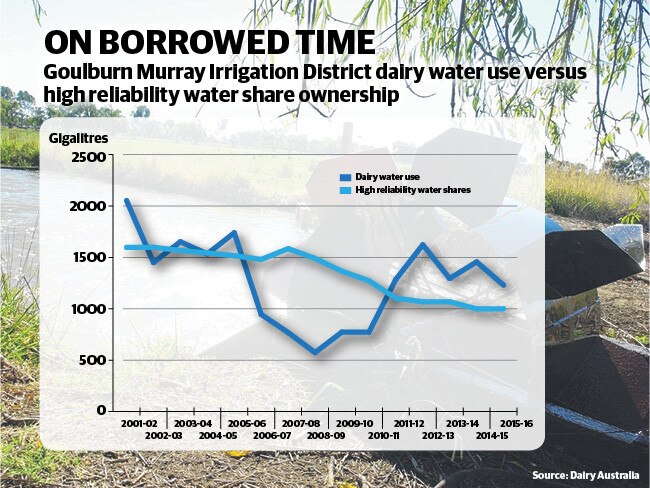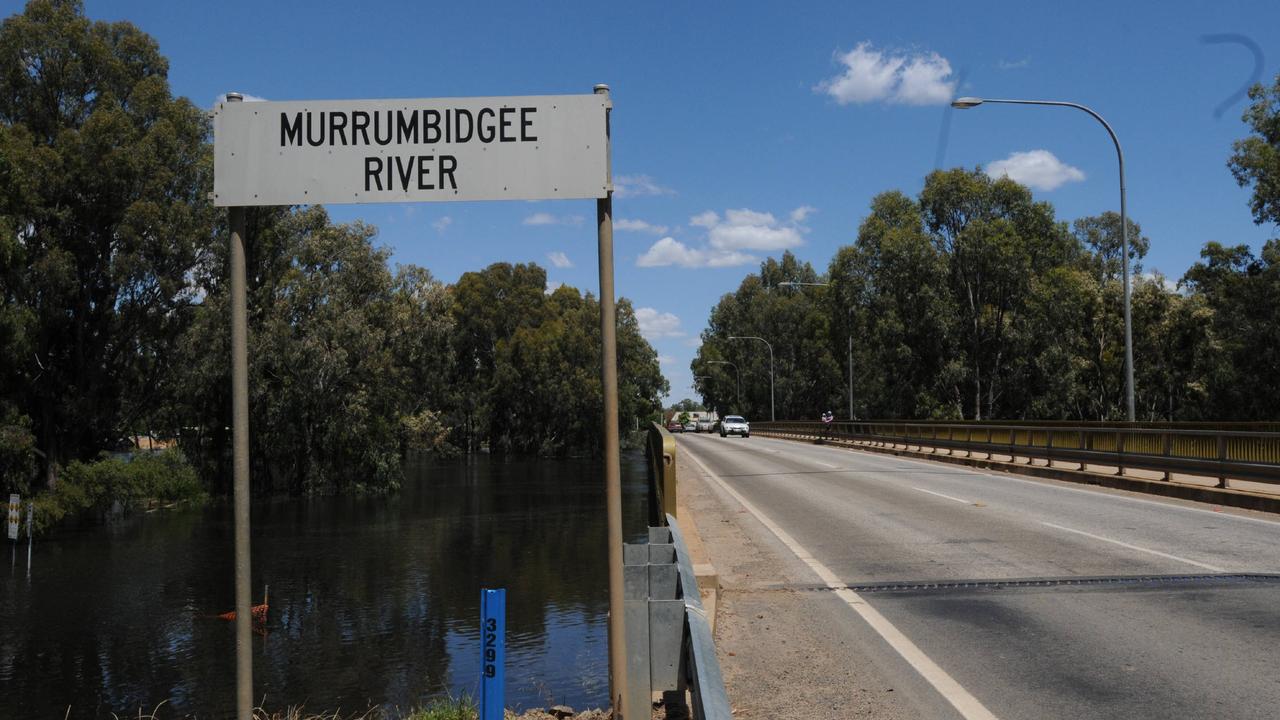Murray Darling Basin Plan: Water shift leaves dairy farmers on the brink
EXCLUSIVE: MILK production in northern Victoria is down 500 megalitres a year under the Murray Darling Basin Plan, with dairy farmers “already past the tipping point”.
MILK production in northern Victoria is down 500 megalitres a year under the Murray Darling Basin Plan, with dairy farmers “already past the tipping point”.
New research from Dairy Australia shows farmers in the Goulburn Murray Irrigation District are using 60 per cent more water than they own, with a heavy reliance on the fickle temporary water market in the wake of water buybacks in the past decade.
The startling figures obtained by The Weekly Times come as the latest basin plan stoush continues, with the Federal Government under increasing pressure from South Australia to deliver an extra 450GL in environmental water promised for that state, on top of the 2750GL basin plan.
Victoria and NSW are refusing to commit to delivering the extra water if it harms regional communities socially or economically — as dictated in the basin plan legislation. Farm groups are doubling down on their efforts to stop more water leaving production, with the Ricegrowers’ Association of Australia refusing to support any future on-farm infrastructure programs to recover the 450GL.
The Dairy Australia analysis — part of an inter-agency GMID land and water use survey, still being finalised — shows that before the millennium drought and basin plan, GMID farmers used 30 per cent more water than they owned, but that water was sourced from other irrigators who were not using their entire allocations.
Farmers sold 23 per cent of their water rights under Government buybacks, equating to 365GL — almost three-quarters of the 512.7GL recovered in buybacks across Victoria, and almost half the state’s total water recovery so far of 800GL.

The analysis showed high-reliability water shares across the GMID were now 1000GL, about 500GL less than 10 years ago. Farmers are now using 60 per cent more water than they own by buying on the temporary water market, but milk production is still down 500ML a year compared with a decade ago.
It echoes the findings of another recent independent report into the GMID, showing dairy was losing $200 million a year at the farmgate since the basin plan’s implementation, with total regional production down $550 million a year.
Australian Dairy Industry Council water taskforce chairman Daryl Hoey said the drop in water availability and milk production was clearly linked.
Mr Hoey said reliance on temporary water left farmers more exposed than ever as dairy competed with other commodities for less and less water.
“We’ve got to a point now that there’s barely enough water left in the system in dry years for farmers to be able to work,” he said.
“It doesn’t take much movement in the water price or a dropping commodity price for it to start unravelling. We are well past the tipping point.”
Mr Hoey wanted more recognition from all basin stakeholders of the contribution farmers made to the environment through buybacks or on-farm efficiencies, and the impact it was having on production and small, regional towns.
Agriculture and Water Minister Barnaby Joyce upset the South Australian Government a fortnight ago when he told them the 450GL was unlikely to be delivered without socio-economic impacts and other options should be discussed.
SA Premier Jay Weatherill has vowed to fight the Federal Government to secure delivery of the full 450GL, while SA Senate crossbencher Nick Xenophon has threatened to hold up Government legislation until he gets assurances of its commitment to the plan.
Mr Hoey said while Mr Joyce was criticised for “speaking too soon” on the 450GL, businesses and people wanting to invest in the southern basin needed certainty.
“Sooner or later the elephant in the room has to be addressed,” he said.
“Let’s have a conversation based on the facts and what the issues are in each state.”
Senator Xenophon on Monday rejected criticisms he was holding the Government to ransom over water reform, saying he just wanted “clear undertakings” to deliver the full basin plan.
“We need to see progress on the plan, that it just doesn’t stall, that people don’t just fly the white flag of surrender, because this actually is good for irrigators as well to have more water-efficient methods,” he said.
Projects he raised included increasing capacity at Menindee Lakes; opening up the Barmah Choke; and expanding levees at Yarrawonga — all of which Mr Joyce said were under investigation or ineligible.
Mr Joyce told Parliament this week the Government wanted to “deliver the plan to the word and letter of the plan” and that it and the states needed to “delve into” how that could be achieved without socio-economic detriment.
Reports yesterday suggested a deal could also be done with Senator Xenophon to “fast-track” some water-saving projects. But even that could hit a snag with the Ricegrowers’ Association boycotting any on-farm measures aimed at delivering the 450GL, which it says is an “unacceptable proposition”.
“It is disingenuous for South Australia to be demanding the recovery of a further 450GL of productive water when they know full well that there are caveats around the recovery of that water,” RGA president Jeremy Morton said.
“Our communities cannot accept any further socio-economic harm. We urge state and federal water ministers to focus on achieving the shared environmental objectives of the basin plan rather than impractical flow and volume targets.”


